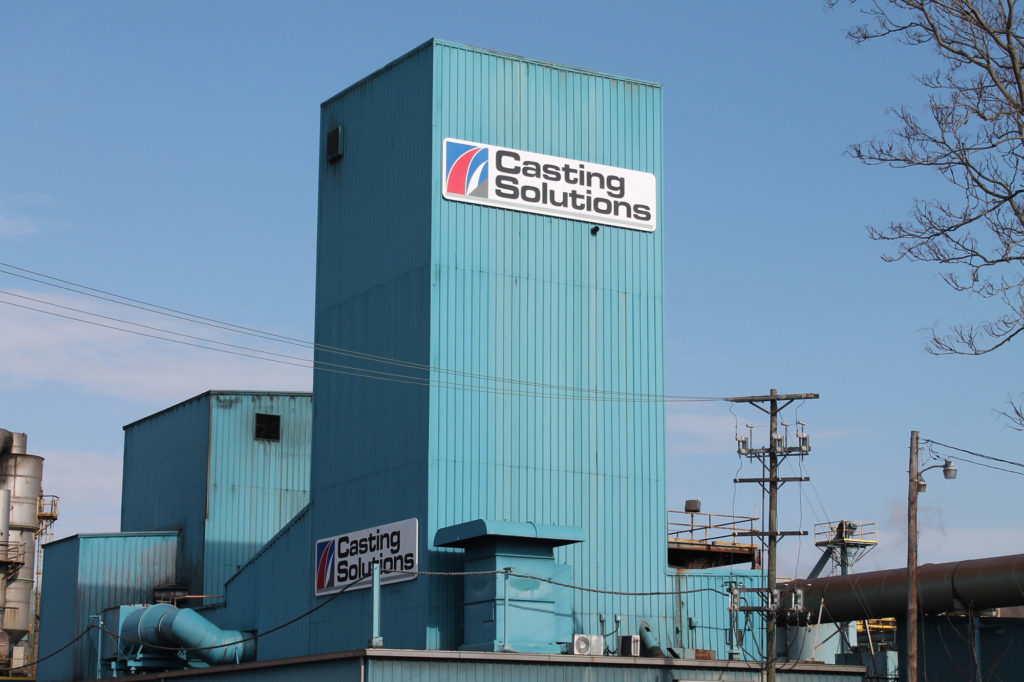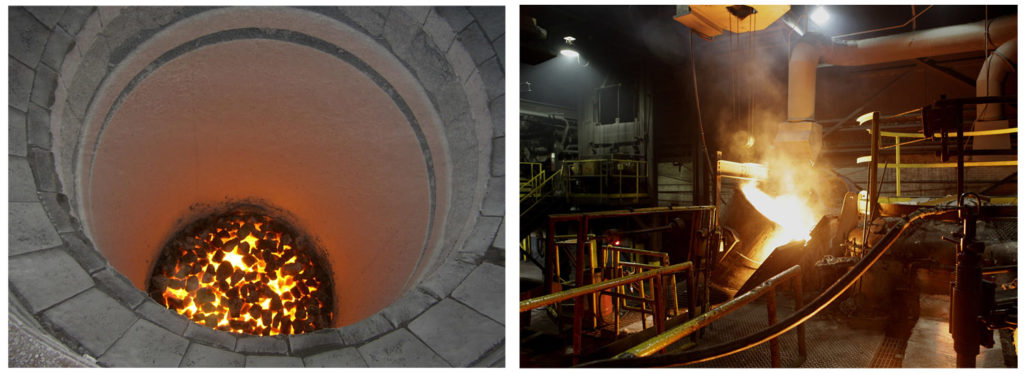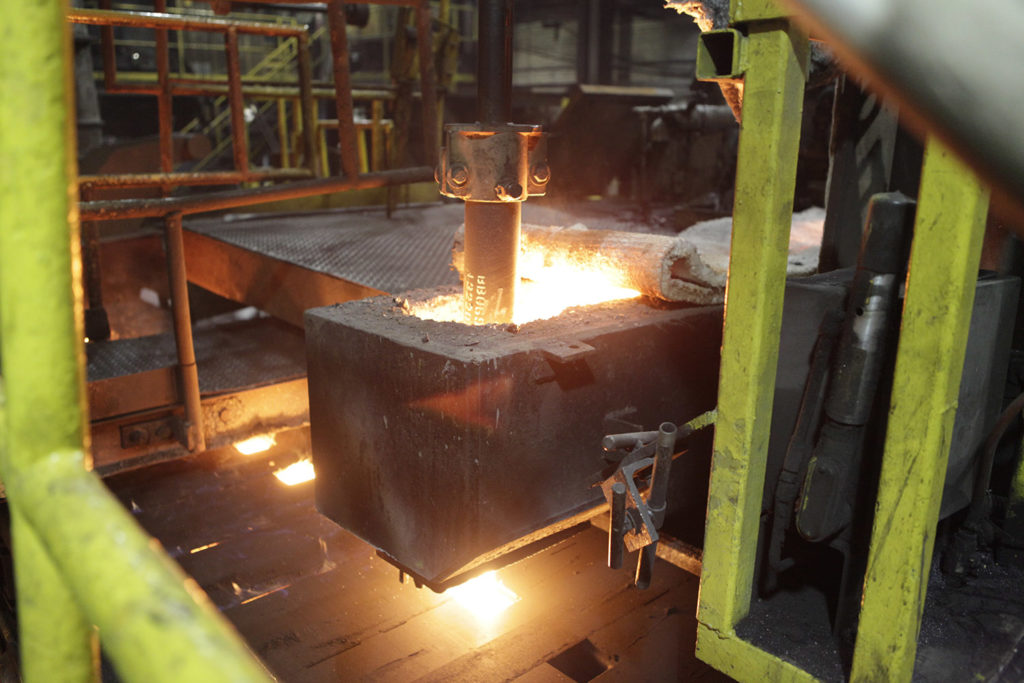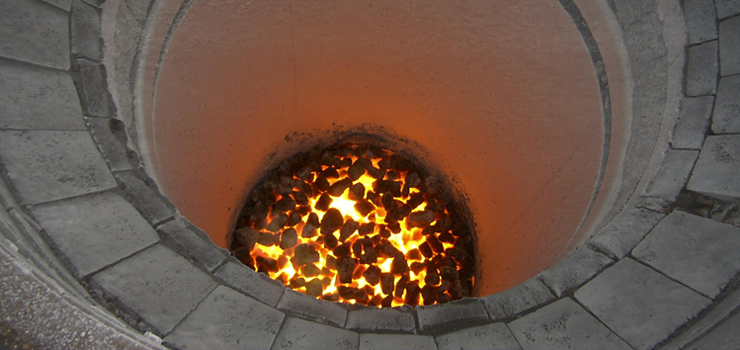As a consumer, you do your part to recycle the items and containers you use on a daily basis. But you use – indirectly – far more material and equipment than you might expect.
Your vehicle’s brake rotors eventually fail and get replaced. Old bulldozers that graded the lots in your development eventually can’t doze anymore, and when they tear down the elementary school you attended, the steel structure within can’t be immediately re-used again.
Though you have little control over what happens to these items after their lifecycle has past, you can rest assured that it’s not going to waste.
Casting Solutions, LLC, a subsidiary of Burnham Holdings, Inc. gives new life to tons of scrap metal each year. The company’s heavy-duty recycling process helps reduce waste in landfills while also ensuring a steady flow of quality material to manufacturers across the country.

Above: The foundry, built in 1914, has been operated by Casting Solutions since 1935.
The main purpose of the Zanesville, OH, foundry is to provide a secure source of high quality boiler and radiator castings to Burnham Holdings’ subsidiaries. But of the 17,500 tons of iron Casting Solutions recycled last year, some of material went into auto parts, water pipe couplings and floor grate sections as well. 100 percent of the much-needed product that the foundry produces comes from recycled material.
High temperature magic
With 3.5 acres under roof and more than 100 employees, the facility rendered more than half a million castings last year alone. It was originally built in 1914 and has been operated by Casting Solutions, LLC since 1935.
“Scrap metal comes into the yard on trucks and leaves as brand new boiler and radiator sections shortly thereafter,” said Jeremiah Clegg, president of Casting Solutions. “It’s the high temperature magic that happens in between that most folks don’t know much about.”
Once in the yard, scrap is loaded into a massive cupola melting furnace with an electromagnetic crane. The furnace resembles a huge cylinder, which is filled from above via an opening called the charge door. Before scrap is added, a layer of coke is placed at the bottom of the furnace. Coke is a high-carbon fuel made from coal. The carbon content is needed to turn steel scrap into cast iron. Once the furnace is filled with scrap, 1200°F pre-heated air is forced through the coke igniting it much like coal. The furnace reaches temperatures near 3000°F as the scrap is melted to liquid, and can render up to 23 tons per hour.

Above: Coke, at the bottom of a furnace, is used to turn scrap steel into iron by adding carbon (left) and a large ladle full of molten iron is poured (right).
As the molten metal passes through the bed of glowing coke, it picks up the carbon it needs be chemically altered into the proper grade of iron, and runs out a spout at the bottom into a 30-ton holding unit. From there, it’s transferred to a number of different lines. Through the entire process, high-tech monitoring equipment precisely controls all inputs; temperature, carbon content, etc.
Boiler castings
For residential boiler castings, the metal goes into a 15-ton holding furnace, which pours directly into molds on what’s called a Disamatic sand-molding machine. Vertical molds are filled with sand, which is stamped with the shape of the boiler section being produced. The mold for a cast iron, oil-fired MPO-IQ is going to going to be different than one for a cast iron, gas-fired ES2. A proprietary core is added to create the void needed, which will ultimately contain the boiler’s water volume.

Above: A boiler section cast being poured on Casting Solutions’ Disa line.
After molten metal is poured into the mold, the casting goes through an automated cooling process. The mold is then removed and the sand is vibrated away, to be used again later. This entire process takes about one hour.
The boiler sections are then loaded onto a monorail system as they are shot-blasted clean with steel shot. This ensures that all sand is removed from the surface of the casting. At this point, the sections undergo hydrostatic testing as required by ASME code. This testing is performed from two to two-and-a-half times working pressure. Some sections will be CNC ground, depending on where they’re headed. Here in Lancaster, PA, U.S. Boiler Company has two CNC machines, so that step can be avoided.
At this point, the sections are put on pallets and stacked on trucks, soon to be assembled and delivered, hopefully to you! If you want, you can proudly tell homeowners that not only will their new cast iron boiler from U.S. Boiler save them energy, but that the sections inside are built from recycled material and made in Zanesville, Ohio!

